Test in production without watermarks.
Works wherever you need it to.
Get 30 days of fully functional product.
Have it up and running in minutes.
Full access to our support engineering team during your product trial
In C#, the ability to perform string concatenation operations using various string class methods on the string object is fundamental. This process is used extensively across various applications, from generating user-facing messages to constructing SQL queries. This tutorial aims to cover every aspect of string concatenation in C#, providing detailed explanations and code examples. We'll also cover the IronPDF library for .NET applications and code examples related to the concatenate strings.
In C#, a string is an object of the String class. This class provides a lot of methods for manipulating strings, including various ways to concatenate them. Before delving into concatenation techniques, it's important to understand two key concepts: string literals and string variables. A string constant, or string literal, is a sequence of characters directly inserted into the code, like "Hello", enclosed in double quotes, often used in string format operations. On the other hand, a string variable is a string stored in a variable that can be modified or used dynamically during runtime.
One of the simplest ways to concatenate strings in C# is by using the + operator. This method is straightforward: you just put a + between two strings or string variables, and the concatenation occurs. Here’s a basic example in a C# program:
public static void Main() {
string hello = "Hello, ";
string world = "World!";
string greeting = hello + world;
Console.WriteLine(greeting);
}public static void Main() {
string hello = "Hello, ";
string world = "World!";
string greeting = hello + world;
Console.WriteLine(greeting);
}Public Shared Sub Main()
Dim hello As String = "Hello, "
Dim world As String = "World!"
Dim greeting As String = hello & world
Console.WriteLine(greeting)
End Sub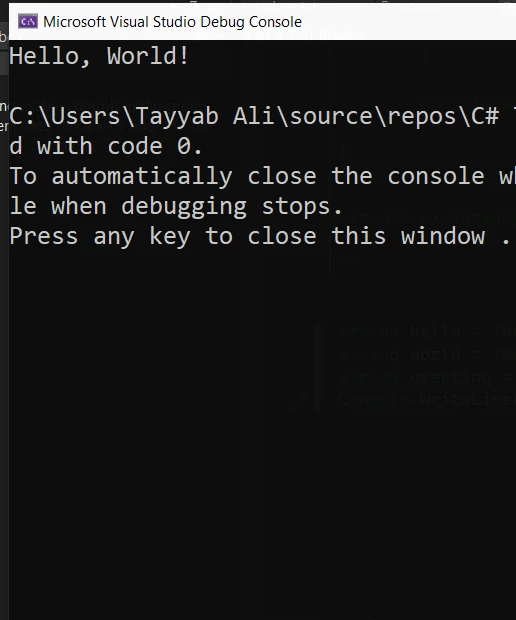
In this example, the same string variable hello and world store string constants. The + operator is used to join these two strings into a single string, stored in the greeting variable. The result displayed would be "Hello, World!".
For scenarios where you need to concatenate multiple strings, the String.Concat method is extremely useful. This method can take any number of string arguments and concatenate them into a single string. Here's how you can use this method:
public static void Main() {
string firstName = "Iron";
string lastName = "Developer";
string fullName = String.Concat(firstName, " ", lastName);
Console.WriteLine(fullName);
}public static void Main() {
string firstName = "Iron";
string lastName = "Developer";
string fullName = String.Concat(firstName, " ", lastName);
Console.WriteLine(fullName);
}Public Shared Sub Main()
Dim firstName As String = "Iron"
Dim lastName As String = "Developer"
Dim fullName As String = String.Concat(firstName, " ", lastName)
Console.WriteLine(fullName)
End Sub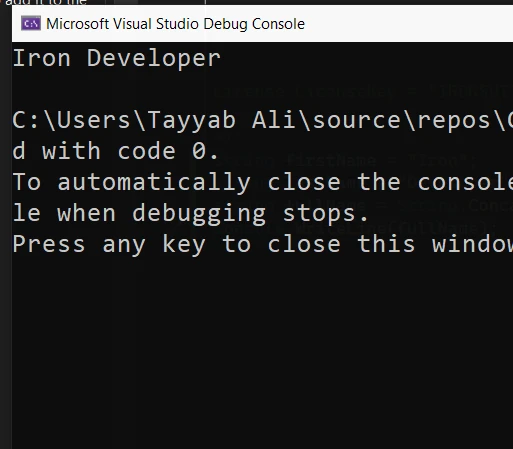
This code snippet demonstrates how String.Concat method is used to concatenate three strings: firstName, an empty string with a space, and lastName. The output would be "Iron Developer".
Another powerful method in the String class for concatenating strings is String.Join. This method not only concatenates strings but also allows you to specify a delimiter to place between each string. It’s particularly useful for joining multiple strings with a consistent separator:
public static void Main() {
string[] words = { "Hello", "World", "from", "C#" };
string sentence = String.Join(" ", words);
Console.WriteLine(sentence);
}public static void Main() {
string[] words = { "Hello", "World", "from", "C#" };
string sentence = String.Join(" ", words);
Console.WriteLine(sentence);
}Public Shared Sub Main()
Dim words() As String = { "Hello", "World", "from", "C#" }
Dim sentence As String = String.Join(" ", words)
Console.WriteLine(sentence)
End Sub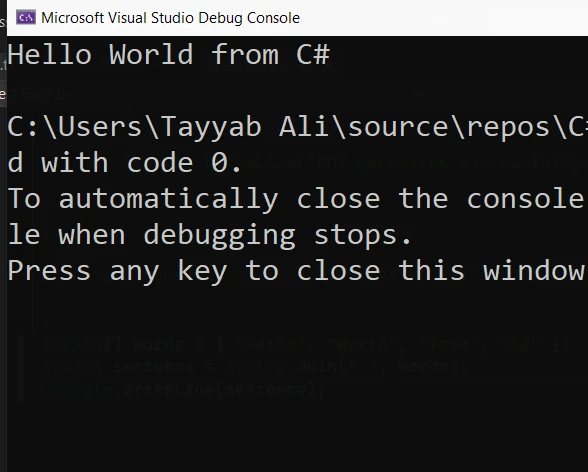
In the above source code, String.Join takes two parameters: the delimiter " " and the array of string words. It joins each element of words into a single string, separated by spaces, resulting in the output "Hello World from C#".
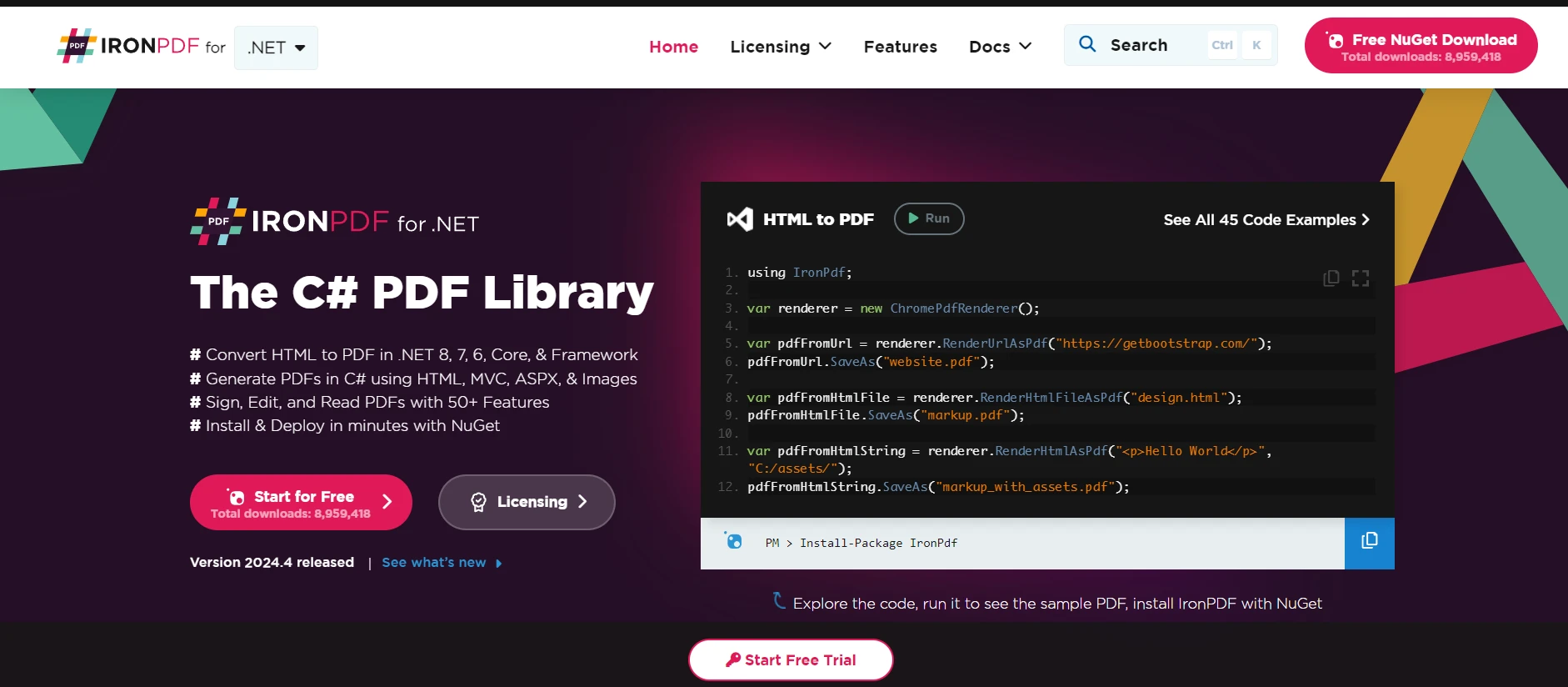
IronPDF is a C# library that helps to work with PDFs in the .NET framework. It can create PDFs from HTML with IronPDF, CSS, JavaScript, and images with high accuracy. IronPDF uses Chrome's rendering engine to make sure your PDFs look exactly like the web content you're converting, with accurate layouts and designs. It's easy to set up and works across various .NET applications, including ASP.NET and MVC. You can also tweak PDFs by adding text, images, or securing them with passwords and digital signatures. IronPDF can handle heavy workloads efficiently, making it suitable for high-demand environments.
Below is a simple example in C# demonstrating how to use IronPDF to concatenate two HTML strings into a single PDF document. The following code example assumes that you have the IronPDF library installed in your .NET project.
using IronPdf;
public class PDFGenerator
{
public static void Main()
{
License.LicenseKey = "License-Key";
// Create an instance of HtmlToPdf class
var renderer = new ChromePdfRenderer();
// Define two HTML strings
string htmlString1 = "<p>This is the first part of the document.</p>";
string htmlString2 = "<p>This is the second part of the document.</p>";
// Concatenate the HTML strings
string concatenatedHtml = htmlString1 + htmlString2;
// Generate PDF from the concatenated HTML string
var pdfDocument = renderer.RenderHtmlAsPdf(concatenatedHtml);
// Save the PDF to a file
pdfDocument.SaveAs("ConcatenatedDocument.pdf");
}
}using IronPdf;
public class PDFGenerator
{
public static void Main()
{
License.LicenseKey = "License-Key";
// Create an instance of HtmlToPdf class
var renderer = new ChromePdfRenderer();
// Define two HTML strings
string htmlString1 = "<p>This is the first part of the document.</p>";
string htmlString2 = "<p>This is the second part of the document.</p>";
// Concatenate the HTML strings
string concatenatedHtml = htmlString1 + htmlString2;
// Generate PDF from the concatenated HTML string
var pdfDocument = renderer.RenderHtmlAsPdf(concatenatedHtml);
// Save the PDF to a file
pdfDocument.SaveAs("ConcatenatedDocument.pdf");
}
}Imports IronPdf
Public Class PDFGenerator
Public Shared Sub Main()
License.LicenseKey = "License-Key"
' Create an instance of HtmlToPdf class
Dim renderer = New ChromePdfRenderer()
' Define two HTML strings
Dim htmlString1 As String = "<p>This is the first part of the document.</p>"
Dim htmlString2 As String = "<p>This is the second part of the document.</p>"
' Concatenate the HTML strings
Dim concatenatedHtml As String = htmlString1 & htmlString2
' Generate PDF from the concatenated HTML string
Dim pdfDocument = renderer.RenderHtmlAsPdf(concatenatedHtml)
' Save the PDF to a file
pdfDocument.SaveAs("ConcatenatedDocument.pdf")
End Sub
End Class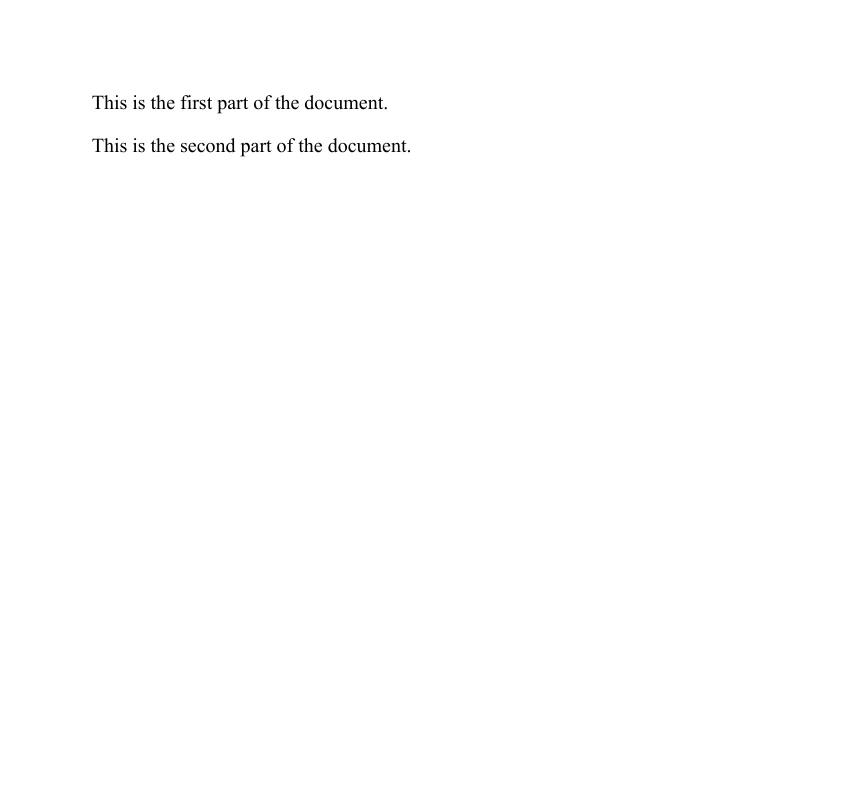
This is a basic example to get you started with concatenating HTML content and generating a PDF using IronPDF. You can expand this by adding more complex HTML, CSS for styling, and handling more advanced PDF features like adding pages or security settings.
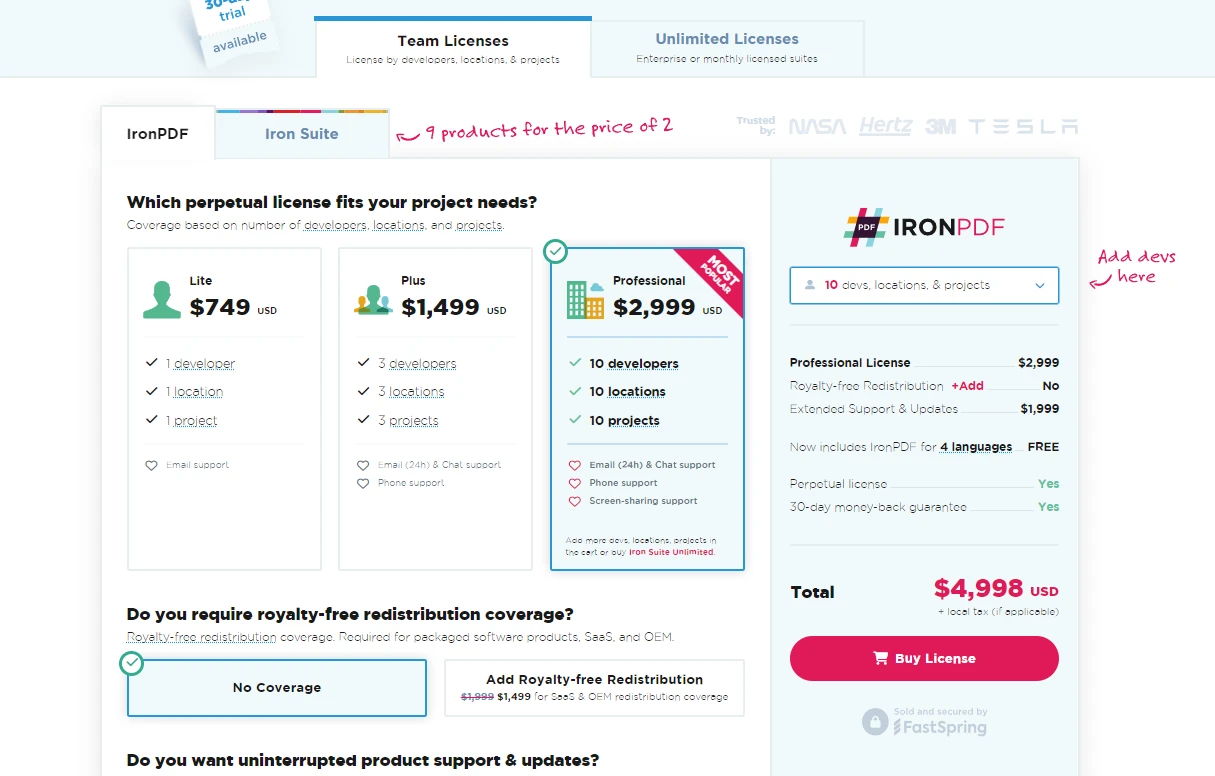
This tutorial covered the essential methods of concatenating strings in C#, each useful depending on the specific requirements of your code. We looked at simple concatenation using the + operator, the String.Concat method for joining multiple strings, and the String.Join method for concatenating strings with a delimiter. Understanding these techniques is crucial for handling string manipulation-heavy code efficiently in C#.
Whether you are dealing with two strings or joining multiple strings, C# provides robust solutions to ensure your string concatenation needs are met effectively.
Additionally, we demonstrated how string concatenation operations in C# can be combined with IronPDF to convert HTML string to PDF documents with IronPDF. IronPDF also offers thorough documentation for developers and code examples for PDF creation to guide developers in utilizing its extensive features.
IronPDF offers a free trial available for download for commercial use with licenses starting at affordable rates. To know more about the various features of IronPDF, please visit their official website for Iron Software.